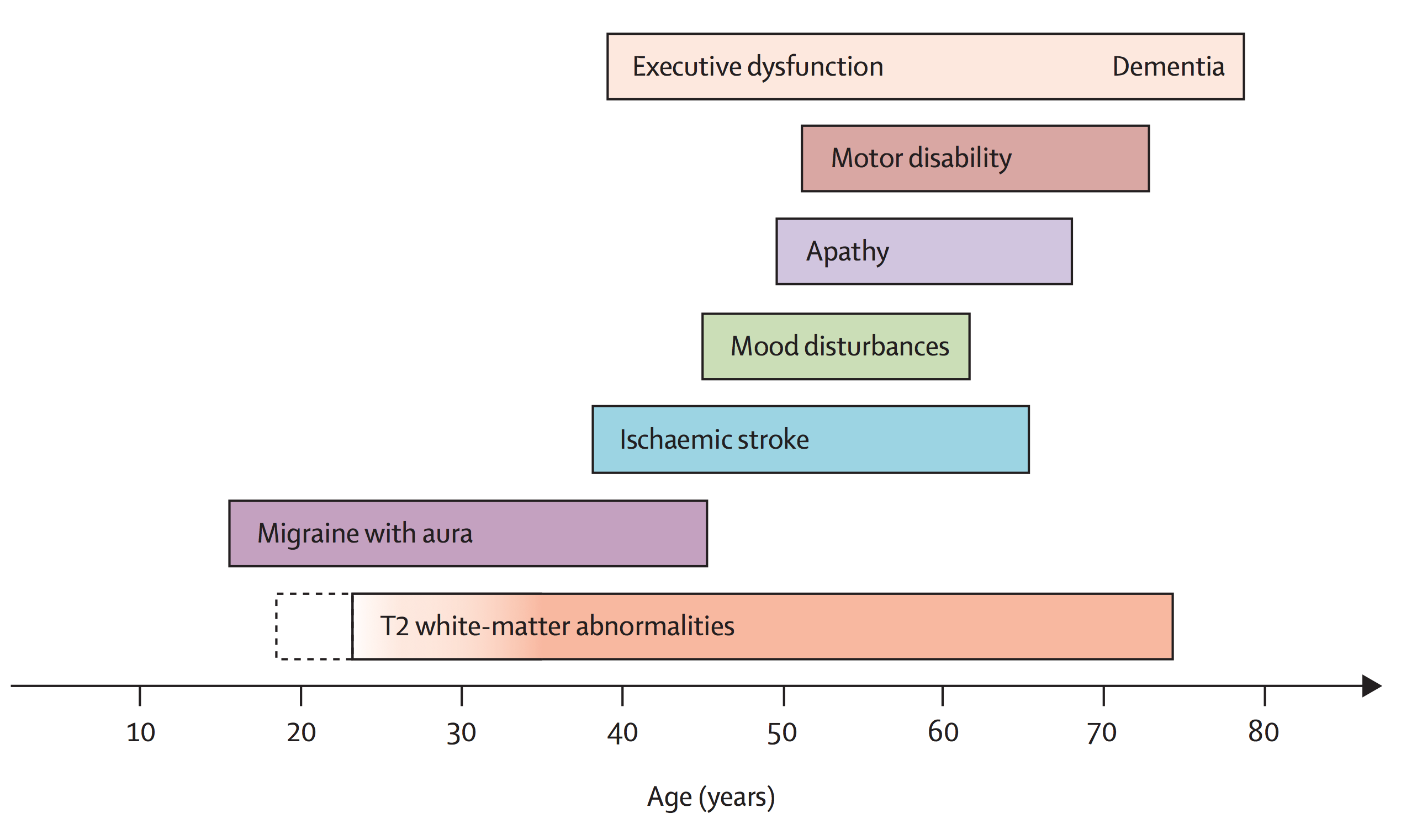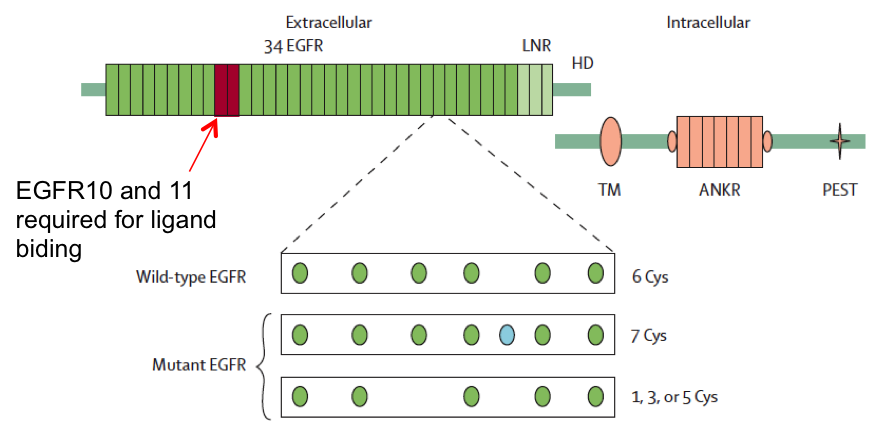What is Small Vessel Disease (SVD)?
SVD refers to pathological processes that affect the structure and function of small penetrating vessels within the brain. Among the important advances in the field of small vessel disease (SVD) has been the identification of genes involved in two Mendelian forms of non-hypertensive adult-onset SVD—CADASIL and CARASIL—that share a number of clinical and pathological features, including marked death of medial smooth muscle cells (SMCs) of small vessels in the brain.
Several lines of evidence indicate that genetic susceptibility factors contribute to the occurrence of sporadic SVD as part of a multifactorial predisposition5. Overall, CADASIL/CARASIL and the sporadic forms of SVD closely resemble one another on neuropathological and clinical levels. This suggests that monogenic (CADASIL/CARASIL) and common non-Mendelian forms of SVD may have some of the same molecular underpinnings. Indeed, there is growing evidence that variants in genes that underlie Mendelian diseases may also modulate the risk for complex forms of the same disease1.
CADASIL and CARASIL

Natural history of the main clinical manifestations of CADASIL. The exact age of onset or presentation of MRI abnormalities is uncertain (dotted line). However, T2 white matter abnormalities progressively increase and become constant at around 35 years of age.
From Chabriat H et al. Lancet Neurol. 2009 Jul;8(7):643-53. Review.

CADASIL is caused by mutation to NOTCH3 gene, causing an odd number of cysteine residues to be present in one or more of the epidermal growth factor repeats (EGFR) encoded by the gene.
From Chabriat H et al. Lancet Neurol. 2009 Jul;8(7):643-53. Review.
CADASIL (Cerebral Autosomal Dominant Arteriopathy with Subcortical Infarcts and Leukoencephalopathy), with an autosomal dominant mode of transmission, is an archetypal SVD that emerges as the most common heritable cause of stroke and vascular dementia worldwide3. Studies demonstrate that the disease is caused by stereotyped missense mutations that alter the number of cysteine residues in the extracellular domain of NOTCH3, a transmembrane receptor that undergoes a series of proteolytic cleavages upon ligand binding that release the extracellular domain (NOTCH3ECD) and ultimately enable the intracellular domain (NOTCH3ICD) to translocate to the nucleus, where it acts as a transcriptional activator3,20,25. NOTCH3 is predominantly expressed in SMCs in adults and is critical for the maturation and function of small vessels7.
Consistent with this, the central pathological feature of CADASIL is abnormal multimerization and extracellular deposition of NOTCH3ECD at the plasma membrane of SMCs in small blood vessels and in extracellular deposits called Granular Osmiophilic Material (GOM)19,22. Moreover, genetic evidence strongly indicates that CADASIL pathogenesis involves a NOTCH3 gain-of-novel-function (neomorphic) mechanism, which is likely related to the GOM deposits. It is not known whether these mutations also affect NOTCH3 transcriptional activity and whether this contributes to the disease process18.
CARASIL (Cerebral Autosomal Recessive Arteriopathy with Subcortical Infarcts and Leukoencephalopathy), predominantly reported in Japanese families, is a rare autosomal recessive SVD with a more complex phenotype that includes premature baldness and spondylosis. The disease is caused by recessive loss-of-function mutations in HTRA1, a secreted serine protease. Recent studies suggest a link between these mutations and impaired transforming growth factor (TGF)-ß family signaling via reduced cleavage of proTGF-ß115,26. Despite these major advances, however, our understanding of potential mechanistic links between NOTCH3 and HTRA1 mutations, and the pathological and clinical consequences, is still rudimentary.
CADASIL: Mechanisms of Disease
Dr. Anne Joutel explains the genetic mechanisms leading to CADASIL, and how her research aims to use this knowledge to understand SVD.
Anne Joutel - CADASIL, mechanisms of disease by SINGER-POLIGNAC
CADASIL: Clinical Features
Dr. Hugues Chabriat describes the clinical manifestations of CADASIL, including migraine and stroke.
Hugues Chabriat - CADASIL : main clinical... by SINGER-POLIGNAC
